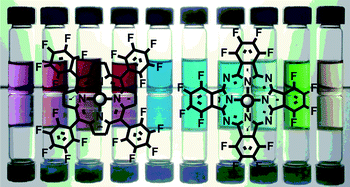Commercially viable porphyrinoiddyes for solar cells
Abstract
Multifunctional molecules bearing different

* Corresponding authors
a
Hunter College and Graduate Center of the City University of New York, 695 Park Avenue, New York, New York, USA
E-mail:
cdrain@hunter.cuny.edu
b The Rockefeller University, 1230 York Avenue, New York, New York, USA
Multifunctional molecules bearing different

 Please wait while we load your content...
Something went wrong. Try again?
Please wait while we load your content...
Something went wrong. Try again?
I. Radivojevic, A. Varotto, C. Farley and C. M. Drain, Energy Environ. Sci., 2010, 3, 1897 DOI: 10.1039/C0EE00009D
To request permission to reproduce material from this article, please go to the Copyright Clearance Center request page.
If you are an author contributing to an RSC publication, you do not need to request permission provided correct acknowledgement is given.
If you are the author of this article, you do not need to request permission to reproduce figures and diagrams provided correct acknowledgement is given. If you want to reproduce the whole article in a third-party publication (excluding your thesis/dissertation for which permission is not required) please go to the Copyright Clearance Center request page.
Read more about how to correctly acknowledge RSC content.
 Fetching data from CrossRef.
Fetching data from CrossRef.
This may take some time to load.
Loading related content
